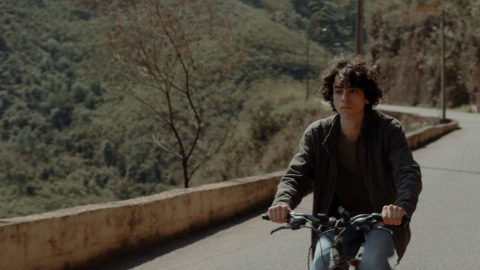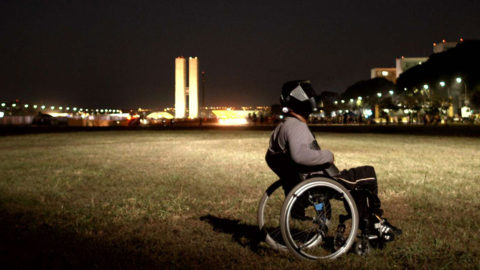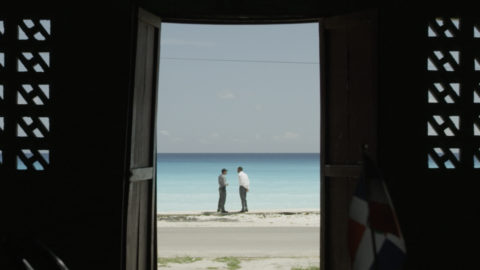Film of the Week: Cocote
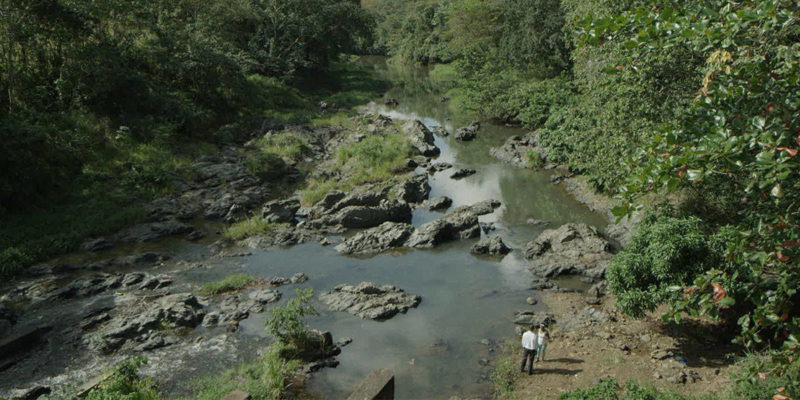
Cocote, from the Dominican Republic, isn’t an obscure work by any means. It’s generally clear what is happening in a narrative that is altogether linear. If this film seems challenging, it’s more a matter of texture and vision—a matter of difference, if you like. I wouldn’t be the only critic to compare Cocote to Eduardo Williams’s The Human Surge, an Argentinian film that, among other themes, evokes a new global consciousness born of the Internet, and that accordingly invented its own novel, perplexing syntax.
Cocote is in some ways a familiar proposition: a tale of vengeance against a background of poverty, family loyalties and religious fervor, in a Caribbean setting. There’s an element here of traditional realism with ethnographic documentary touches, but director Nelson Carlo de los Santos Arias narrates his hero’s travails through so many different stylistic voices that it’s as if a simple folk ballad becomes a dizzying chorale. Cocote is so much its own film that, even if you find yourself standing at one remove from its aggressive singularity, you can’t help but be affected.
Aggressive is the word. Asked by Nicolas Rapold in a Film Comment interview about his use of 360-degree camera moves, de los Santos replied that his insistence on certain visual techniques was an act of resistance, a refusal of traditional spoken language (and by extension, no doubt, of traditional film grammar): “a clear fuck you to the language of the colonizer.”
Nevertheless, there’s plenty that is traditional in Cocote, not least the premise: a man is pressurized by family and community to avenge his father’s death, and agonizedly hesitates to act. It could be any number of Mafia stories, or it could be Hamlet. Alberto (Vicente Santos) is a middle-aged black man from a rural region of the Dominican Republic, working as a gardener for a wealthy white family in the capital Santo Domingo. When we first meet him by the family’s luxurious swimming pool, we learn that his father has died; the woman he works for gives him leave to attend the funeral, as long as he’s back by Monday. The film makes it seem a very long time till Monday, largely because Alberto, a devout Christian, winds up attending farewell rites for his father in a very different faith, of which he disapproves: Dominican vodou, aka los Misterios. These rites, or rezos, last nine days, a subtitle tells us, but it’s hard to know quite how the flow of time works here. Sequences showing these ceremonies sometimes start by day, cut to night, then to the next morning; they take place in different locations, too, in Alberto’s family’s village, sometimes in an extraordinary white marquee with a massive central altar like a wedding cake, or in a vast cave that has to be reached by boat and land. We’re soon pretty disoriented, but so is Alberto.
The old man, Eusebio, has been violently killed by one Martínez, a policeman—or possibly some sort of semi-official quasi-cop, but at any rate a feared big shot who delights in humiliating people and is feared in the community (he’s wonderfully described as being like “someone who craps and doesn’t feel it”). The women of the village—Alberto’s mother and sisters, and various neighbors—tell him that it’s his job to take revenge on Martínez, but he’s reluctant, both because he’s a Christian and because he’s a quiet, reserved man whom you can’t imagine having a shred of violence in his system.
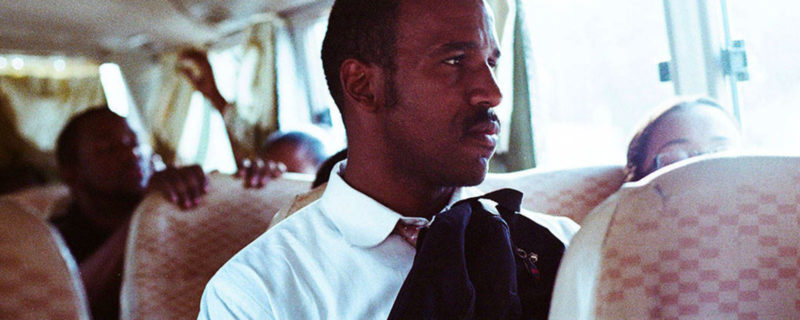
Always dressed in a pristine white shirt with black trousers, Alberto is a paragon of reserved dignity—perhaps partly a mark of his city servitude—while the women around him are furies. Among them are his sister Karina (Judith Rodríguez Perez), supposedly a former street kid adopted by Eusebio, although Alberto believes she’s really his father’s daughter. Her rage is nothing compared to that of sister Patria (Yuberbi de la Rosa), who gives Alberto a terrific tongue-lashing in a riverside scene. Another is the Christian preacher who warns Alberto against taking part in the community’s “witchcraft”; but there’s little to choose between the intensity of the rezos and her own gospel-like officiations and gestures, at one moment imperiously shoving Alberto to the ground.
This is a film of great violence, although usually implied rather than shown, and it begins with the title—Dominican Spanish meaning “neck,” but referring to the neck of a beast, like the chicken we see beheaded on the butcher’s block. This bestialization is the ultimate insult, and Eusebio’s honor must be made good. Alberto may stand apart from such dirty business, protected by his aura of white-clad loftiness, but it becomes clear that violence is the way in his community. In one scene, Alberto sits quietly by as Karina berates another woman, Chave, said to have killed her man and dumped the body in a creek, but the accusation seems almost mundane in this milieu, as if Karina is merely telling her off for lowering the tone of the neighborhood.
Alberto, meanwhile, tries to do things by the book and complain to the proper channels, in an extraordinary extended scene shot from the interior of a darkened police station. Standing outside in the sun, framed Searchers-style by the building’s doorway, Alberto talks with an officer who tells how he too was caught up in a horrific episode of rape and humiliation. The only escape from such brutality, he tells Alberto, is to join the police. Either way, it’s clear, justice is hard to find.
Arranged in chapters—the headings combine place names with subtitles like as “Accumulation,” “Repetition,” “Circulating”—the film feels as if it is organized musically, rather than by a traditional narrative structure. De los Santos pushes sound to the forefront, and the occasional incursions of non-diegetic music are generally surprising. We hear sounds that might be electronic, or produced by string instruments, sometimes in an ominous, insistent throb. As Alberto travels by bus to his village, the music surges in an unsettling crescendo reminiscent of the Beatles’ “A Day in the Life”; later, when the film seems to reach a recognizable crime-drama climax, a sudden blaring fanfare signals (ironically?) that we’ve reached a generic thriller moment.
Both the rezos sequences and the family arguments organize the film in a series of turbulent emotional surges—symphonic swells, if you like—that produce repeated releases of physical and psychical energy. Yet any ultimate catharsis is kept in check until the narrative attains a final resolution (and even then, catharsis isn’t exactly what’s delivered). The rituals themselves comprise much of the film, and are filmed in a documentary manner, the camera getting into the thick of the action as celebrants mourn, rage, swoon, sometimes fight, to the sound of weeping, drumming, bells.
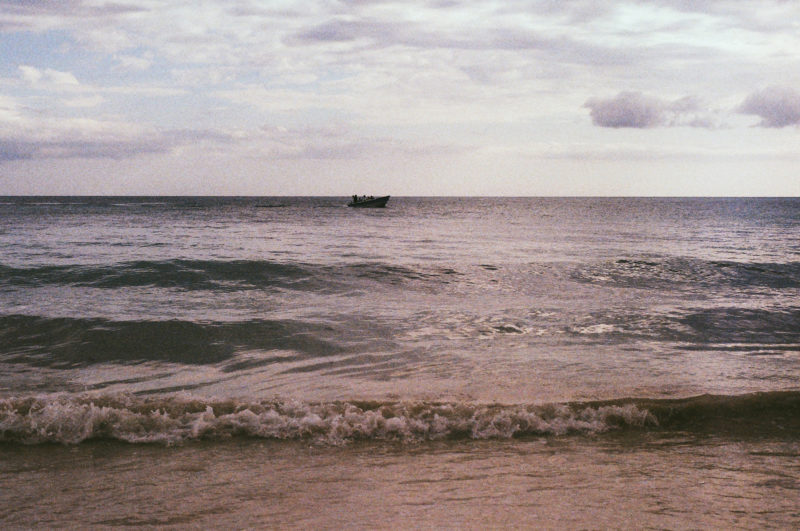
The ceremonies in the film were re-created specially, but a death had occurred in the locality two months before, and the community was responding partly to this (the cast is a mixture of nonprofessionals and professionals, the latter including Santos and Rodríguez). The rituals would last from 9 to 5, and de los Santos would film them, documentary-style, over several hours at a time. Watching the film, it’s easy to lose track of how long these scenes last, and not all viewers will be glad to see them coming round again still another time; yet the repetition is part of the film’s logic, showing how much emotional release the community achieves while Alberto, his psyche attuned to a different cultural logic, experiences a claustrophobic relationship to his turmoil. We feel as once excluded and as trapped as he does.
De los Santos and DP Roman Kasseroller further keep us simultaneously alienated and mesmerized by using an extraordinary collage of techniques throughout, with styles and images that often seem unmotivated but that leave a mark. Sometimes it’s a matter of hiding things that we’d expect to look at directly: a key confrontation on Alberto’s arrival is relegated to the background of the shot, while children play in the foreground; in another shot, he’s in the foreground but in soft focus, while the camera focuses perversely on a figure in the distance dragging a sheaf of grass. A church service is heard but not seen, obscured by a door that remains shut in our face until Alberto opens it and enters.
Elsewhere, Cocote periodically jumps from color to black and white: notably in a bleached-out vista of huts under a cloud-filled sky, a super-textured close-up of fish laid out to dry. We also get (presumably genuine) TV material for ironic or comic effect: a melodrama about demonic possession, news items about a boozy goat and a rooster that announces the coming of Christ. Other pictures are harder to integrate into the logic of the whole: what appears to be a phone-shot image of various animals rooting around, and a profoundly ominous black and white prelude showing vast clouds of billowing smoke with refuse workers or ragpickers. The latter spectacle couldn’t form a starker contrast with the following image of the swimming pool, cleanly shot in perfect symmetry, soundtracked to the clink of ice in glasses.
How the drama ends is at once clear and obscure. A climactic scene is one of a number shot in 360-degree pans, but this one takes place almost in pitch blackness and begins with a couple having sex; however, who they are and whether they’re significant to the story is left for us to interpret. There’s an evident symbolic weight to the play of black and white: the former represented by both shadows and dark skins (arguably filmed with more textural beauty than in any film since Pedro Costa’s Horse Money), the latter by the fabrics of religious ritual and by Alberto’s perennial white shirt (one shot, of him lifting his arms by a fire at night, seems to echo Goya’s painting The Third of May, 1808). The juxtapositions attain a striking poetry, as in a close-up of hands clasping a white ceremonial cloth.
The film ends back by the pool, with another image of servant and masters. De los Santos has noted that, as a scion of the DR’s privileged middle class, it was important for him to show the life of a worker and what it really means. That dynamic can have uncomfortable results: see Carlos Reygadas’s Battle in Heaven, a magnificent, even visionary film but one that makes both Mexico’s haute bourgeoisie and its working class look grotesque, but more at the expense of the latter. Cocote may not be obviously a more humane or compassionate film—that would imply a certain emotional softness that you won’t find here. It’s just a differently complex one, and that makes all the complex difference.
Jonathan Romney is a contributing editor to Film Comment and writes its Film of the Week column. He is a member of the London Film Critics Circle.



